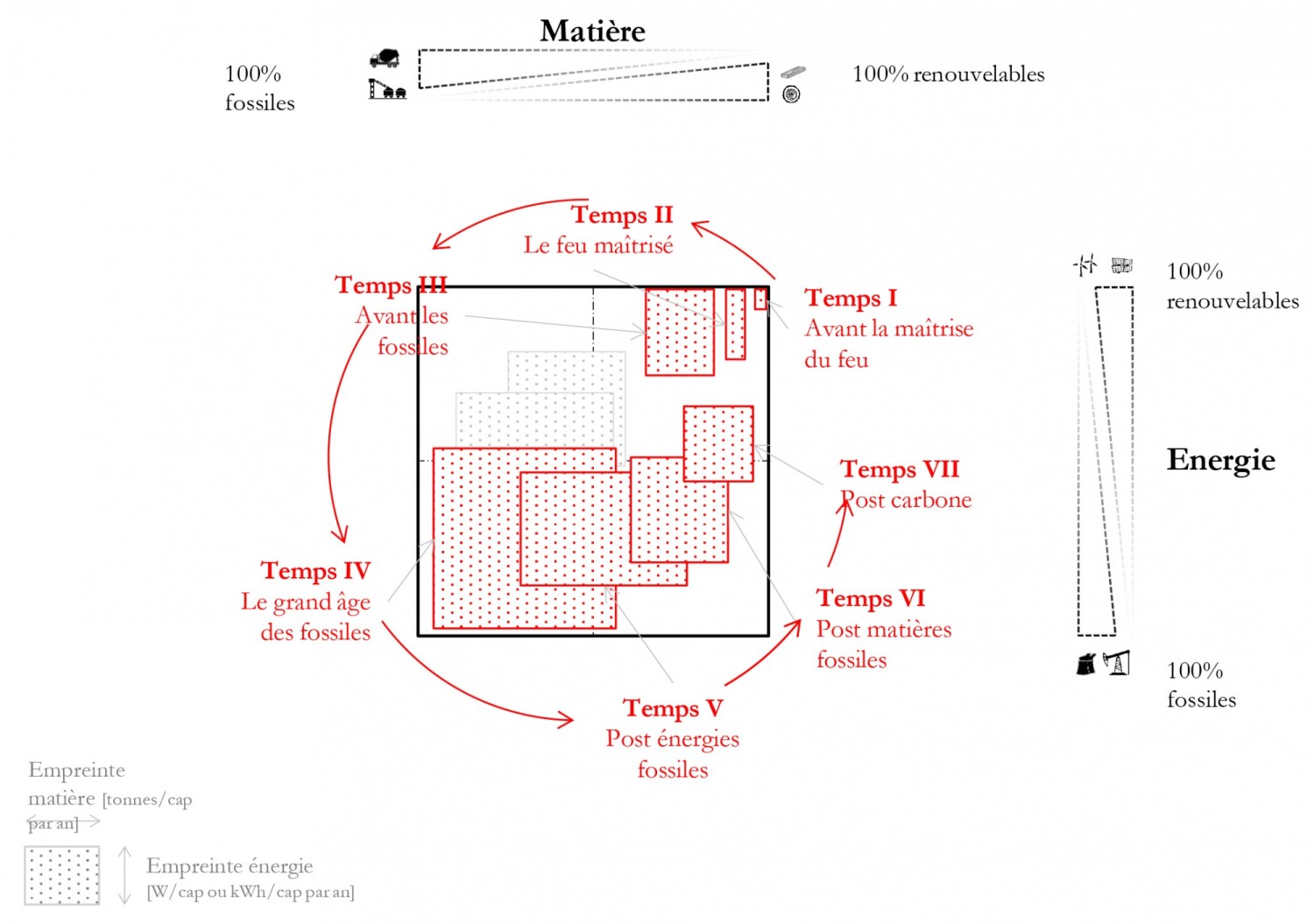Raphaël Ménard
Energy, Matter, Architecture
This thesis explores the relationships between architecture, energy, and matter. It analyzes the influence of the availability of materials and energy on the metamorphosis of architecture over time. It presents the foundations of renewable architecture and sustainable urban planning, capable of freeing themselves from fossil fuels and non-renewable materials. To this end, this work builds a bridge between two approaches: on the one hand, that of a technical culture, examining sustainability through sustainability metrics; on the other, responses that are the fruit of the art of design, project culture, and a human and qualitative approach to environmental issues. This thesis comprises 29 chapters divided into three parts, each of around 20 pages, written in such a way as to allow for independent reading.
The first part, “A history in seven stages,” consists of a brief history of architecture, narrated in seven sequences (from time I to time VII), based on the following premise: the availability and use of energy and materials, and whether or not they are renewable, are the essential determinants of the art of building and planning. Following this chronological breakdown, this section compares energy and material flows, analyzing several references from different eras on the same level. Later, and since the Modern era, this section looks at the dead ends of theories or references considered sustainable, which sometimes focus excessively on energy (time V) or, conversely, on materials (time VI). Still based on this energy-matter framework, this section examines unique architectures and renewable energies, the catalysts of time VII, the end of this fresco.
The second part, “Elements of Renewable Architecture,” offers more technical chapters that delve deeper into the quantitative aspects of time VII, this new paradigm of sustainability, while also integrating the contingencies of the climate emergency. To this end, this section provides tools for dimensioning and proportioning the art of “renewable design” in light of a few terrestrial invariants. This part addresses temporal issues and describes the metrics of ecological return times; it offers some keys to sustainable development, governed primarily by population densities. On a more personal note, this section ventures into the political arena with a few proposals for initiating the necessary transformations: these reflect the author's broader, sometimes radical, positions throughout this document.
However, without being able to “give shape” to this time VII, the third part, “Illustrated Projects,” dissects personal experiences, reexamined in light of the results of the two previous parts. This selection of projects, spanning twenty years of practice, illustrates a wide spectrum of experiments, from small to large scale, with a deliberately critical retrospective view. With some new results for time VII, a few chapters propose theoretical developments to test the dependence of energy-material impacts on the size of the artifacts analyzed.
- Doctoral framework
◖ Dissertation supervisor
Robert Le Roy
Geometry, Structures, Architecture Laboratory, ENSA Paris-Malaquais
◖ PhD framework
Thesis defended in November 2018
◖ Research environment
OCS Laboratory
AUSser joint research unit, Gustave Eiffel University
Illustration →
Raphaël Ménard, The seven times of architecture, 2018.
